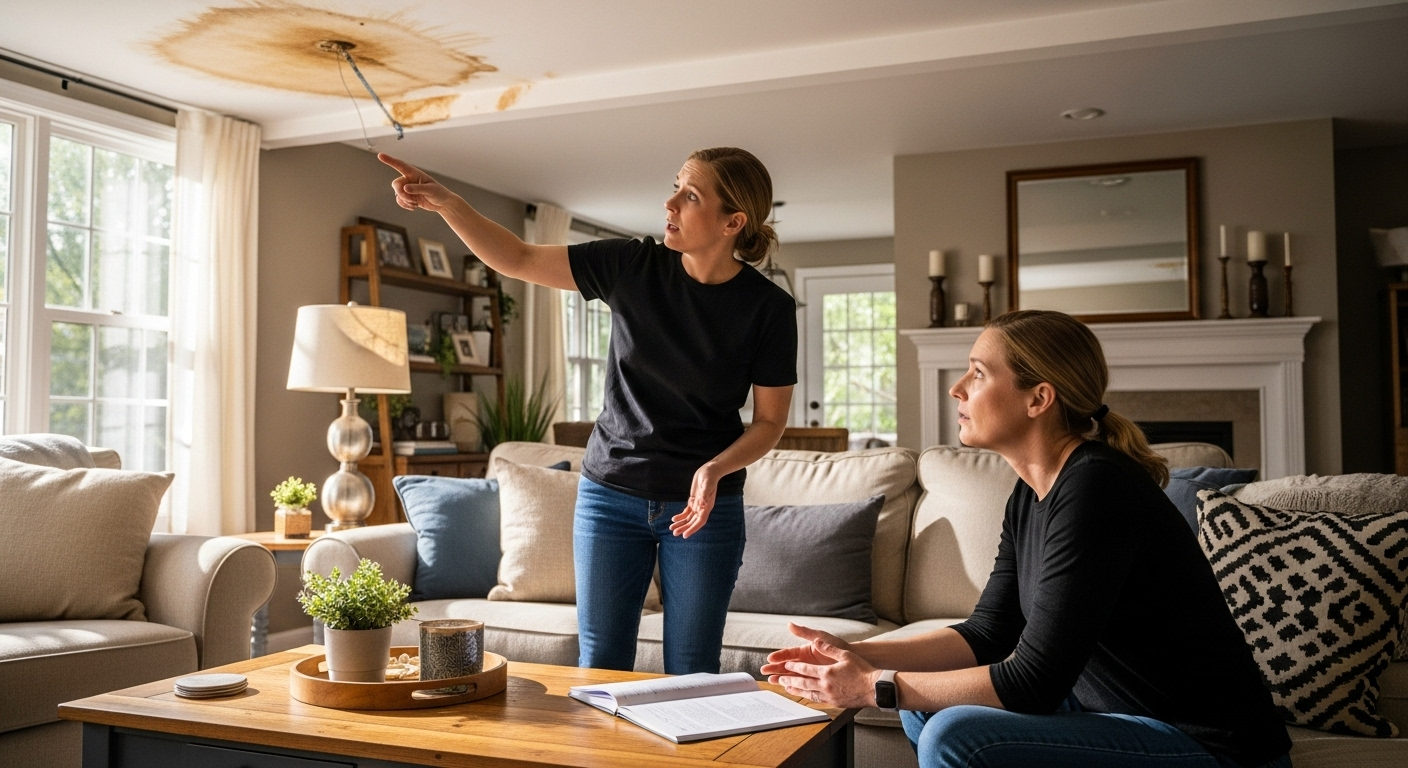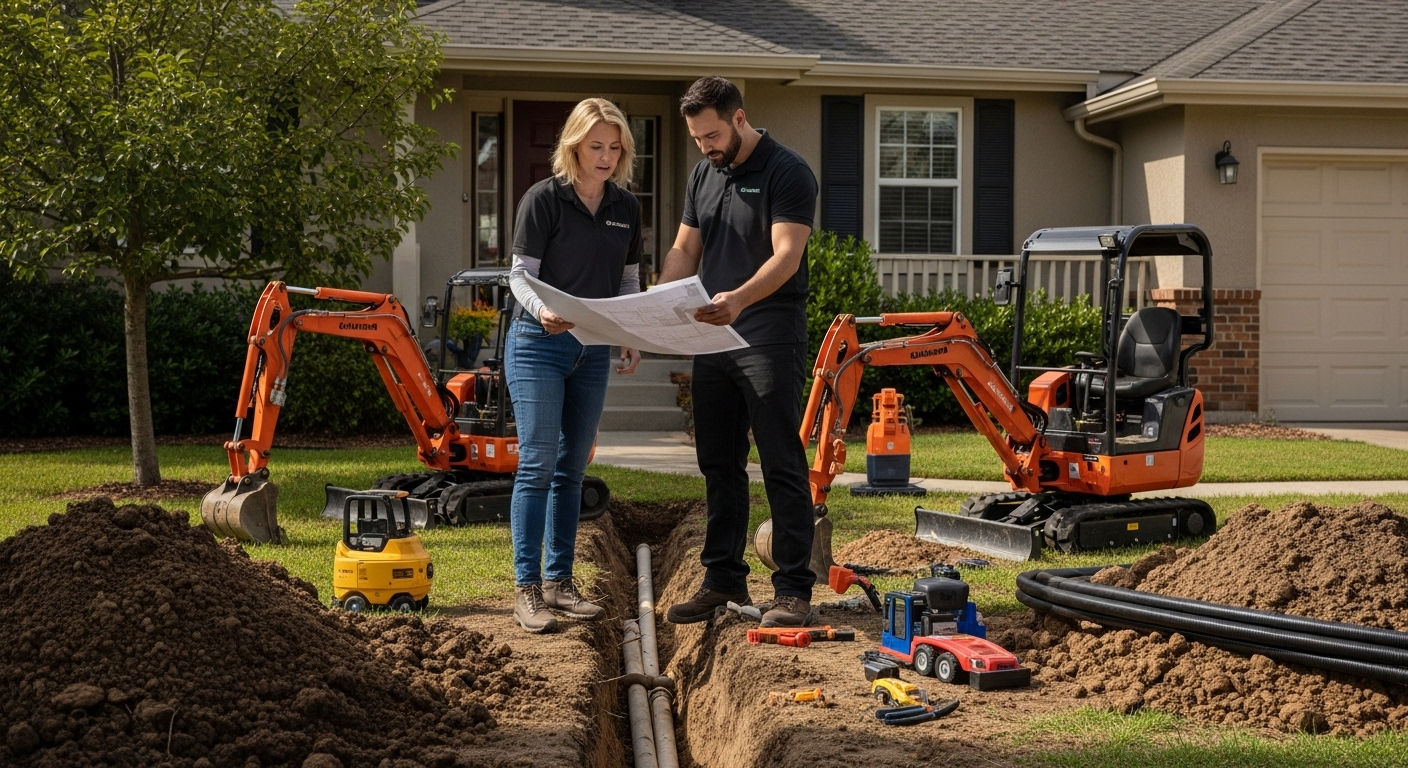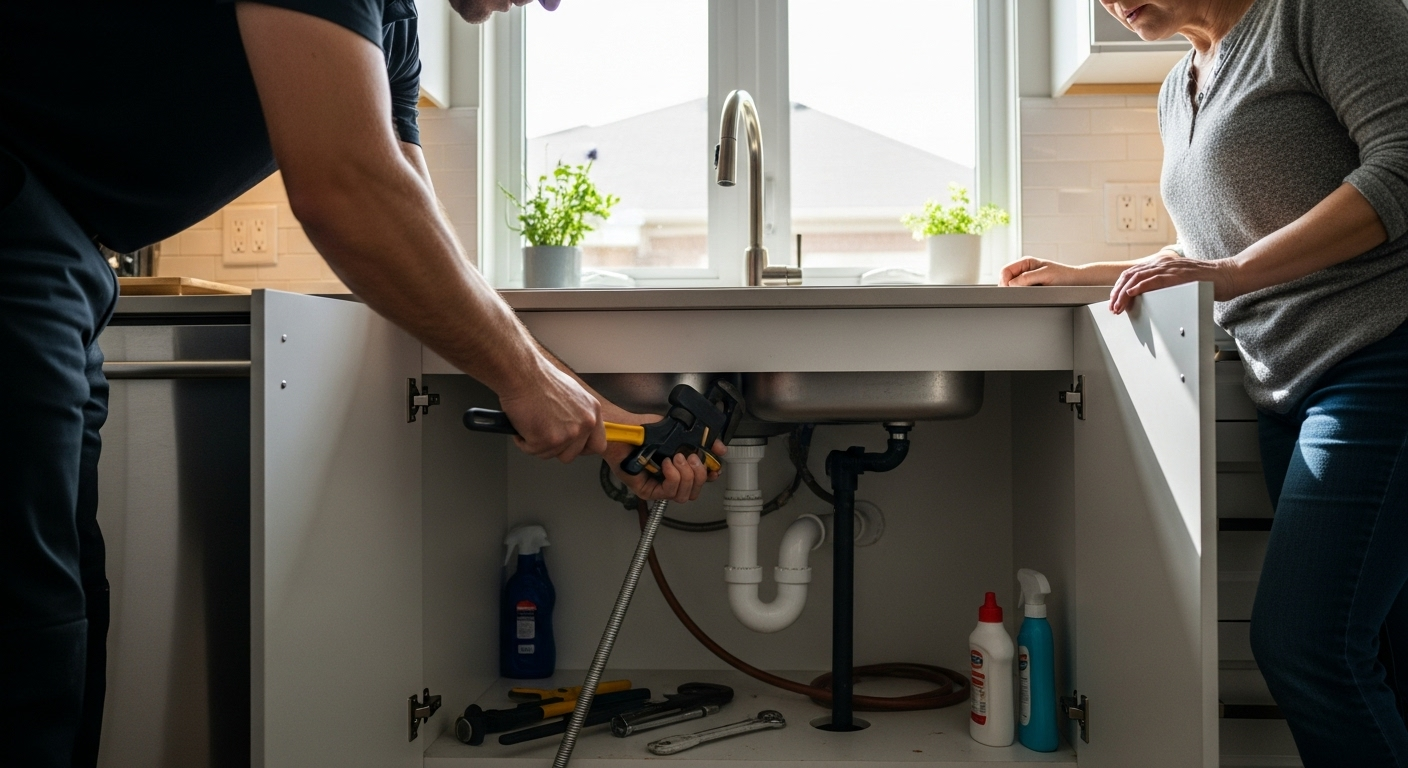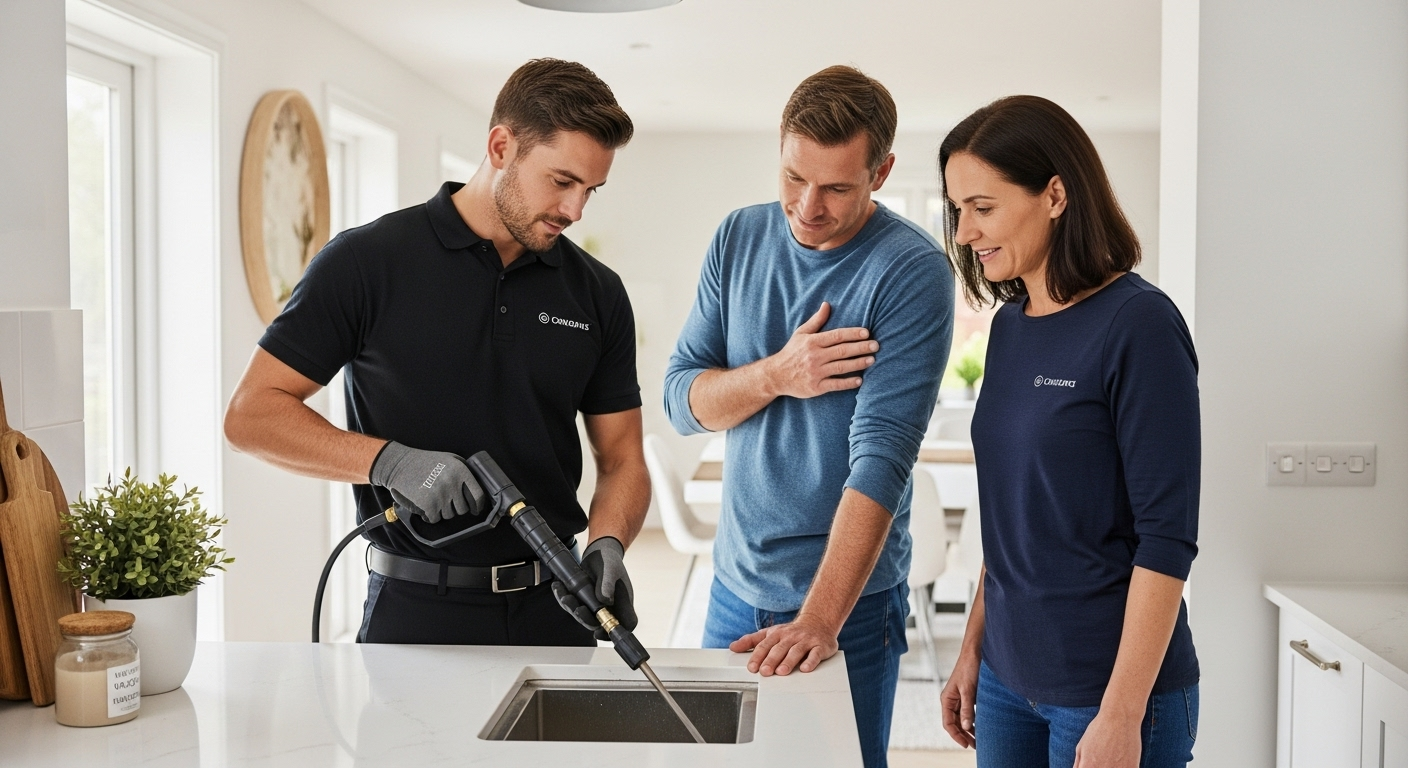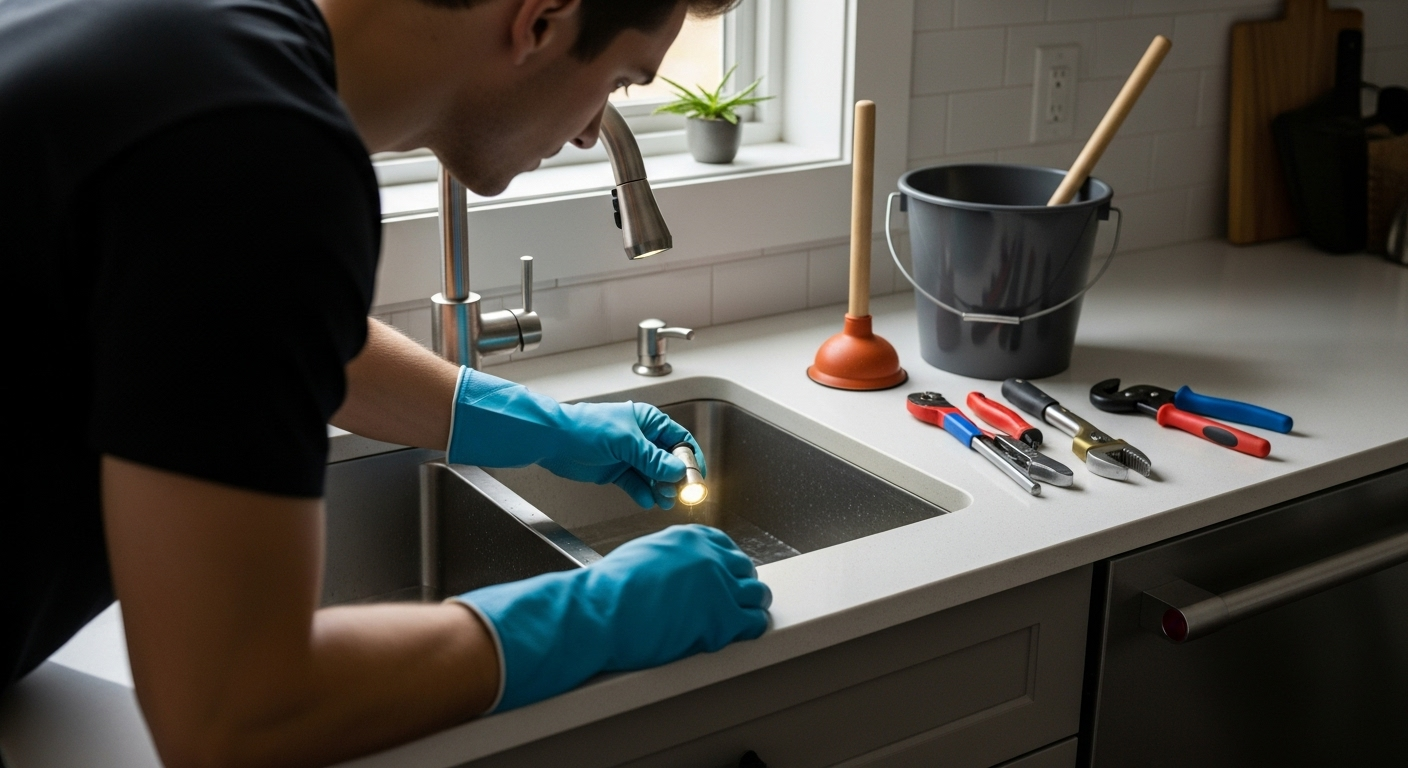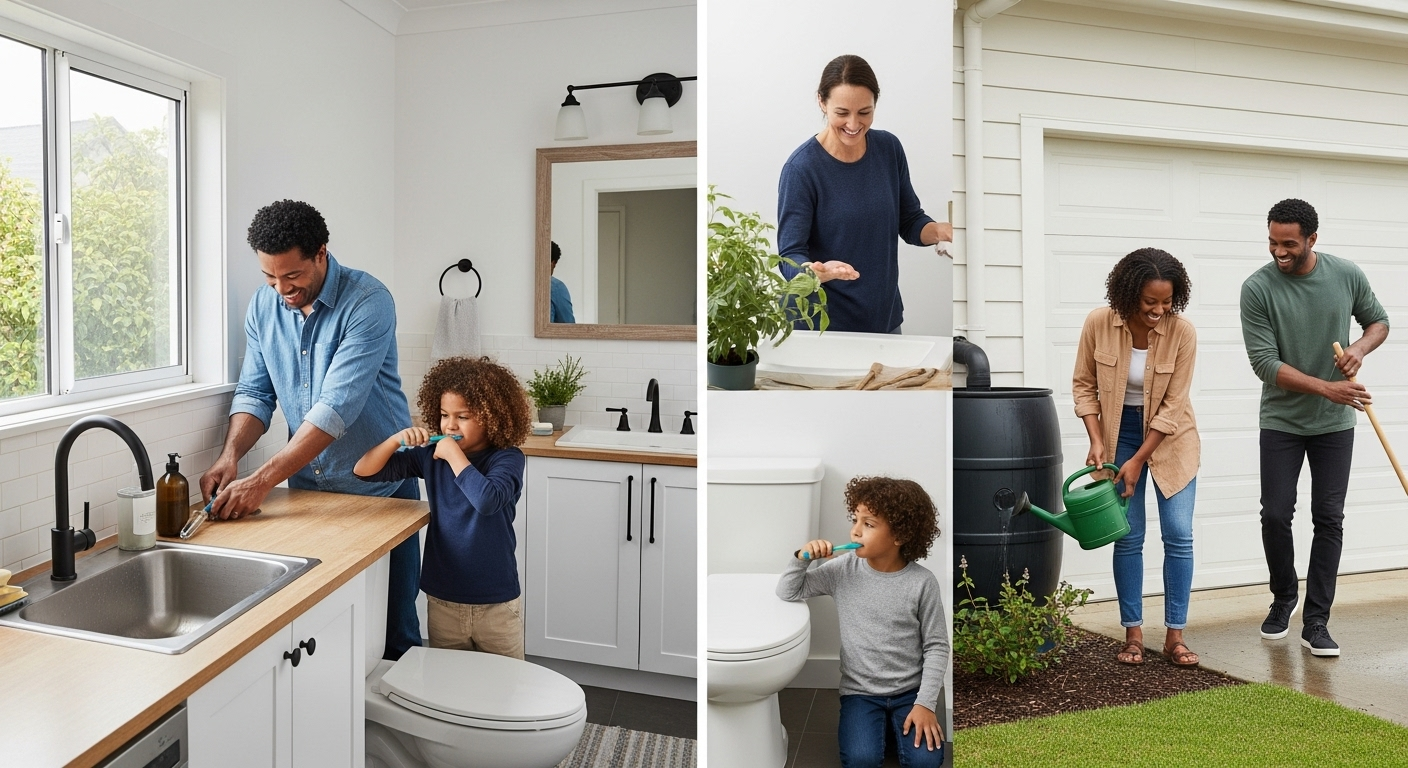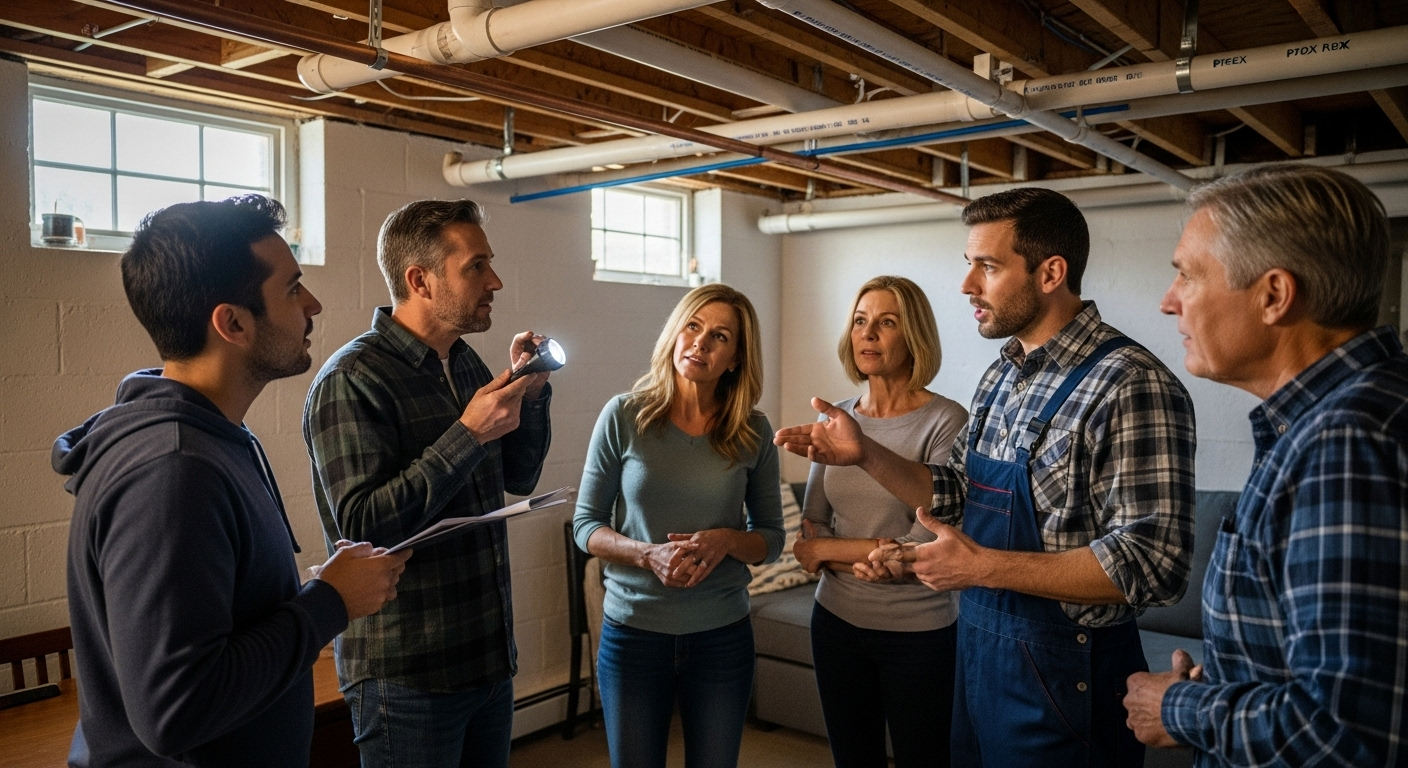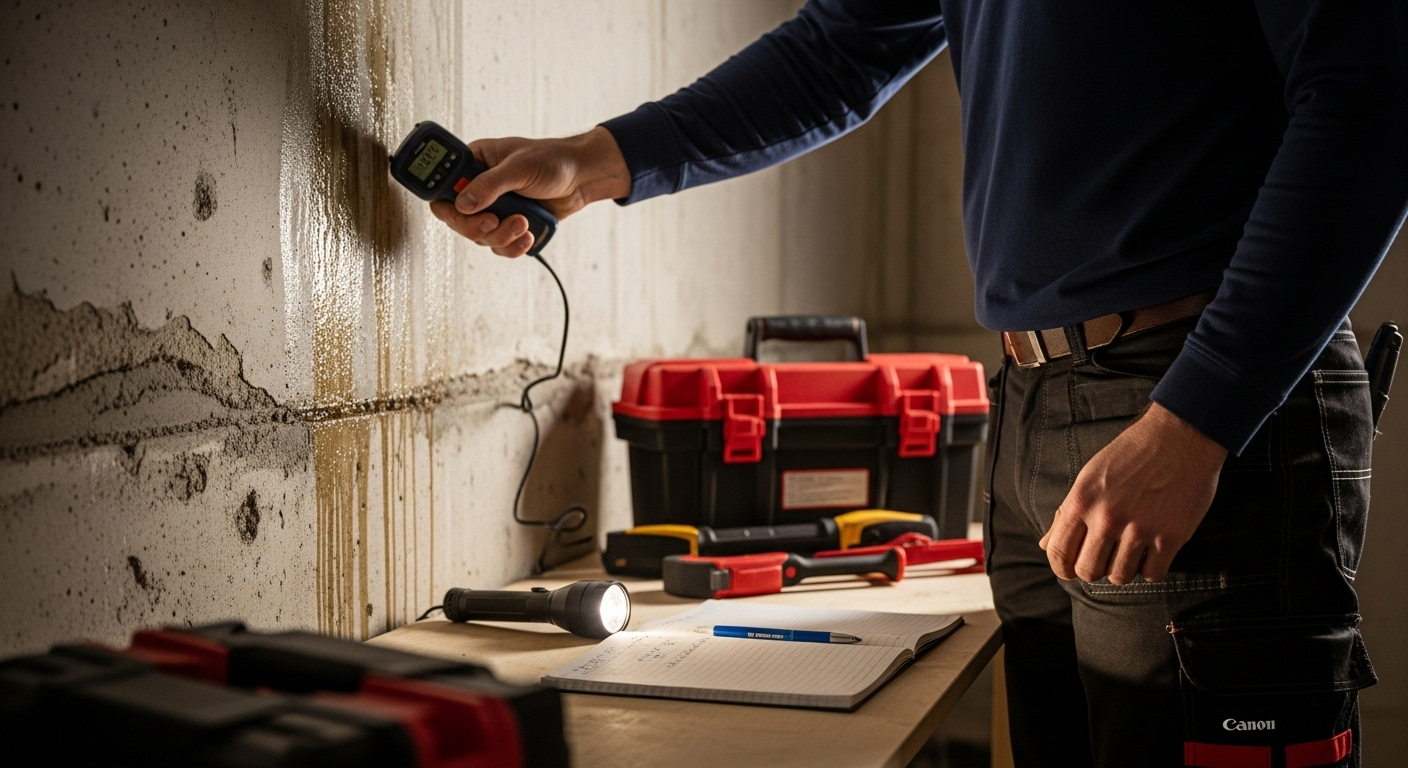Understanding Why Pipes Burst: Causes and Consequences
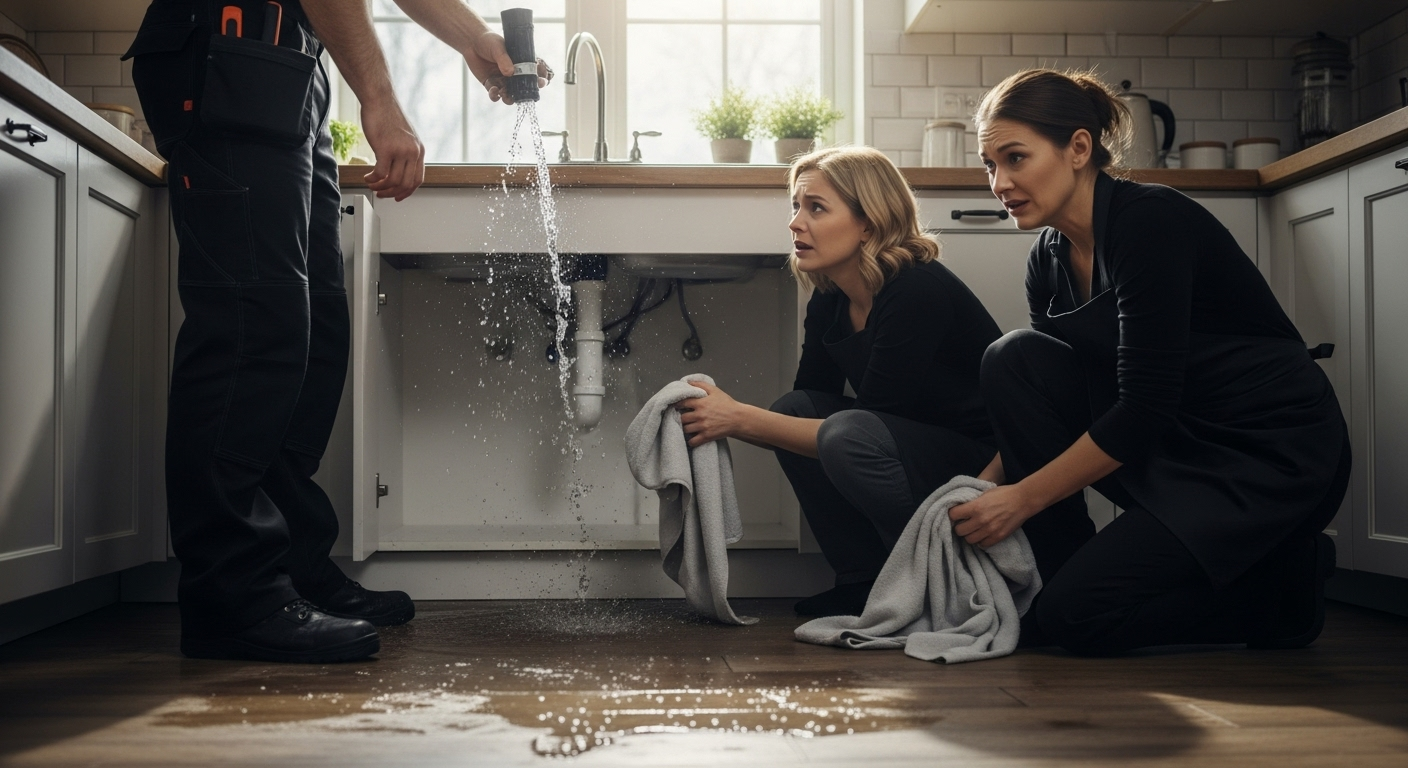
Burst pipes can transform a calm morning into a household disaster in minutes and the risk is higher than most people think. When water freezes, it expands by about 9 percent and that tiny change can unleash enough force to crack solid metal or plastic. People often blame temperature alone but old pipe materials, water pressure spikes, and even tree roots lurking underground quietly set the stage long before any cold snap ever hits.
Table of Contents
Quick Summary
| Takeaway | Explanation |
|---|---|
| Insulate pipes to prevent freezing | Protect unheated areas in winter to avoid pipe bursts from freezing water expansion. |
| Monitor water pressure levels | Use pressure-reducing valves to maintain optimal water pressure and reduce stress on pipes. |
| Conduct regular plumbing inspections | Professional evaluations help detect early signs of damage and maintain system integrity. |
| Identify early warning signs | Look for changes in water pressure, discolouration, or moisture around pipes to catch issues early. |
| Understand your pipe materials’ vulnerabilities | Different materials degrade uniquely; knowing this helps tailor maintenance strategies. |
What are the Common Causes of Pipe Bursts?
Pipe bursts are complex plumbing emergencies that can cause significant damage to homes and infrastructure. Understanding the underlying mechanisms helps homeowners recognize potential risks and take preventative measures.
Temperature Extremes and Pressure Changes
Water pipes are particularly vulnerable to sudden temperature fluctuations. When water freezes, it expands by approximately 9%, creating immense internal pressure within the pipe. This expansion can cause pipes to crack or rupture completely. In Toronto’s harsh winter climate, uninsulated pipes in unheated spaces like basements, crawl spaces, and exterior walls are most at risk.
Another critical factor is water hammer , a phenomenon where rapid changes in water flow create sudden pressure surges. These pressure waves can stress pipe materials, leading to potential weakening and eventual failure. Older plumbing systems with rigid connections are especially susceptible to these dynamic pressure changes.
Material Degradation and Corrosion
Pipes naturally deteriorate over time due to various environmental and chemical factors. Corrosion gradually weakens pipe walls, making them more prone to ruptures. Different pipe materials experience unique degradation processes:
- Copper pipes can develop pinhole leaks from water chemistry interactions
- Cast iron pipes are susceptible to rust and internal scaling
- Galvanized steel pipes corrode from inside, reducing water flow and structural integrity
Stress corrosion cracking occurs when mechanical stress combines with chemical deterioration, creating microscopic fractures that eventually lead to pipe failure. Learn more about our comprehensive pipe assessment services to understand how professionals evaluate pipe health.
External Mechanical Stress
External mechanical forces can also trigger pipe bursts. Construction activities, ground movement, and improper installation can create unexpected stress points. Tree root intrusion is another significant concern, as roots can gradually penetrate pipe joints, causing misalignment and potential ruptures.
Homeowners should remain vigilant about potential warning signs like unusual water pressure changes, discolored water, or unexplained moisture around pipes. Early detection can prevent catastrophic pipe failures and minimize potential water damage to your property.
This table summarizes the main causes of pipe bursts along with brief explanations and typical warning signs to help homeowners recognize and address risks proactively.
| Cause | Explanation | Common Warning Signs |
|---|---|---|
| Temperature Extremes | Freezing and expansion create excessive internal pressure | Sudden drops in water flow, cold spots |
| Pressure Surges | Rapid changes in water flow strain pipe walls | Loud banging noises, fluctuating water pressure |
| Material Degradation/Corrosion | Gradual weakening due to chemical or physical wear | Discoloured water, leaks, visible corrosion |
| External Mechanical Stress | Physical forces, installation errors, or root intrusion | Unexplained moisture, cracked pipes, water pooling |
Why Does Temperature Affect Pipe Integrity?
Temperature plays a critical role in determining the structural integrity of plumbing systems. Understanding how thermal changes impact pipes helps homeowners prevent potential damage and maintain their plumbing infrastructure effectively.
The Physics of Thermal Expansion
Pipes are subject to fundamental physical principles of thermal expansion and contraction. When temperatures drop, materials contract, and when they rise, materials expand. Different pipe materials respond uniquely to these temperature variations:
- Metal pipes experience more dramatic dimensional changes
- Plastic pipes have slightly more flexible thermal properties
- Ceramic and concrete pipes are more brittle and prone to cracking
Thermal stress occurs when pipes cannot accommodate these dimensional changes smoothly. The internal molecular structure of pipe materials determines their capacity to withstand temperature fluctuations without compromising structural integrity.
Water’s Unique Molecular Behavior
Water exhibits extraordinary physical properties that significantly impact pipe integrity. Unlike most substances, water expands when it freezes, increasing its volume by approximately 9%. This unique characteristic creates tremendous internal pressure within confined spaces like pipes.
When water freezes, its molecular structure transforms, pushing against pipe walls with immense force. Read our guide on preventing winter plumbing damage to understand how to protect your home’s plumbing system during extreme cold.
Material Vulnerability and Structural Limitations
Different pipe materials have varying thermal tolerances. Copper pipes become more brittle at lower temperatures, while PVC pipes can become less flexible. Cast iron pipes are particularly susceptible to thermal shock, which can cause microscopic fractures that compromise long-term structural integrity.
Homeowners in regions with significant temperature variations must be especially vigilant. Proper insulation, strategic pipe routing, and regular maintenance can mitigate the risks associated with thermal stress. Understanding these principles empowers property owners to make informed decisions about their plumbing infrastructure and prevent potential costly repairs.
How Do Pipe Materials Influence Burst Risk?
The type of material used in plumbing systems plays a critical role in determining a pipe’s vulnerability to ruptures. Each material possesses unique characteristics that directly impact its structural integrity, longevity, and potential failure mechanisms.
Material Composition and Structural Properties
Pipe materials vary significantly in their ability to withstand internal and external pressures. Metallic pipes like copper and steel have different mechanical properties compared to synthetic materials such as PVC and polyethylene:
- Copper pipes offer excellent corrosion resistance but can become brittle with age
- Cast iron pipes provide substantial durability but are prone to rust and internal scaling
- PVC pipes are lightweight and resistant to chemical degradation
- Galvanized steel pipes gradually corrode from the inside, reducing structural strength
The molecular structure of these materials determines their response to environmental stressors, temperature changes, and mechanical pressures. Explore our comprehensive pipe assessment techniques to understand how different materials behave over time.
Aging and Degradation Mechanisms
Each pipe material experiences unique degradation processes.
 Metallic pipes are susceptible to corrosion, which creates microscopic weaknesses that can eventually lead to catastrophic failures. Synthetic pipes may develop slow crack growth, where tiny fractures gradually expand under consistent stress.
Metallic pipes are susceptible to corrosion, which creates microscopic weaknesses that can eventually lead to catastrophic failures. Synthetic pipes may develop slow crack growth, where tiny fractures gradually expand under consistent stress.
Factors like water chemistry, soil conditions, and installation quality significantly influence a pipe’s long-term performance. Older pipes with multiple repair histories are particularly vulnerable, as repeated interventions can introduce additional stress points.
Performance Variability and Risk Assessment
Pipe failure risks are not uniform across materials. Smaller diameter pipes typically face higher burst risks due to reduced wall thickness and concentrated stress points. Manufacturing quality, installation precision, and maintenance history also play crucial roles in determining a pipe’s potential for rupture.
Homeowners should prioritize periodic professional inspections to assess their plumbing infrastructure. Understanding the specific characteristics of your pipe materials enables more proactive maintenance strategies and helps prevent unexpected and costly plumbing emergencies.
The following table compares the key characteristics of common household pipe materials and their respective vulnerabilities as discussed in the article.
| Pipe Material | Corrosion Resistance | Vulnerabilities | Notable Features |
|---|---|---|---|
| Copper | Good | Brittle with age, reacts to water | Excellent corrosion resistance, develops pinhole leaks |
| Cast Iron | Moderate | Rust, internal scaling, thermal shock | Durable, can fracture with rapid temperature shifts |
| Galvanized Steel | Poor | Internal corrosion, flow reduction | Gradually weakens from inside, decreased structural strength |
| PVC | Excellent | Becomes less flexible in cold | Lightweight, resistant to chemical degradation |
| Polyethylene | Excellent | Prone to slow crack under stress | Flexible, durable, good for varied environments |
What Role Does Water Pressure Play in Pipe Failure?
Water pressure represents a fundamental and complex factor in determining the structural integrity of plumbing systems. Understanding its nuanced interactions with pipe materials helps homeowners recognize potential risks and prevent catastrophic failures.
Pressure Dynamics and Structural Stress
Internal water pressure creates continuous mechanical stress on pipe walls. Hydraulic pressure can cause pipes to experience several critical stress scenarios:
- Constant pressure fluctuations gradually weaken pipe structures
- Sudden pressure surges can create immediate structural damage
- Sustained high pressures accelerate material fatigue
The relationship between pressure and pipe failure is not linear. Different pipe materials respond uniquely to pressure variations, with factors like wall thickness, material composition, and age significantly influencing their resilience. Learn more about detecting early pressure-related plumbing issues to prevent potential system failures.
Pressure-Induced Mechanical Failures
When water pressure exceeds a pipe’s design specifications, multiple failure mechanisms can emerge. Water hammer creates dramatic pressure waves that cause sudden, intense stress on pipe walls. These rapid pressure changes can induce microscopic structural damages that accumulate over time, eventually leading to ruptures.
Pressure-related failures often originate from seemingly minor issues like blocked pipes, faulty valves, or improper system design. Municipal water supply variations, home water pump configurations, and internal plumbing network complexities all contribute to potential pressure-induced stress.
Pressure Management and Prevention
Proactive pressure management is crucial for maintaining plumbing system integrity. Residential water systems typically operate between 40-80 pounds per square inch (PSI). Pressures exceeding 80 PSI can dramatically increase pipe failure risks.
Homeowners should invest in pressure-reducing valves and conduct regular system assessments. Professional inspections can identify potential weak points, measure actual system pressures, and recommend targeted interventions before catastrophic failures occur. Understanding these pressure dynamics empowers property owners to implement strategic maintenance approaches that protect their plumbing infrastructure.
How Can Understanding These Factors Help Prevent Damage?
Knowledge is the most powerful tool in preventing plumbing system failures. By comprehensively understanding the various factors that contribute to pipe damage, homeowners can implement proactive strategies that significantly reduce the risk of costly and disruptive ruptures.
Early Detection and Preventative Strategies
Proactive maintenance transforms potential catastrophic failures into manageable interventions. Recognizing early warning signs allows homeowners to address emerging issues before they escalate:
- Unusual water pressure changes indicate potential system stress
- Discolored water suggests internal pipe degradation
- Unexplained moisture near pipes signals potential structural weaknesses
Regular professional inspections create a comprehensive baseline of your plumbing system’s health. Discover how to identify critical plumbing warning signs to stay ahead of potential system failures.
Strategic Intervention and Infrastructure Protection
Understanding pipe vulnerabilities enables targeted protective measures. Homeowners can implement specific strategies based on their pipe materials, age, and environmental conditions. This might include installing pressure-reducing valves, adding insulation in temperature-sensitive areas, or applying protective coatings to mitigate corrosion risks.
Technological advancements like acoustic leak detection systems and predictive maintenance software provide additional layers of protection. These tools can identify microscopic changes in pipe structures long before visible damage occurs, allowing for precise and timely interventions.
Comprehensive Risk Management
Effective damage prevention requires a holistic approach that considers multiple interconnected factors. This includes understanding local water chemistry, soil conditions, temperature variations, and municipal water supply characteristics.
Homeowners should develop a comprehensive maintenance plan that includes:
- Annual professional plumbing assessments
- Regular pipe material evaluations
- Systematic documentation of system modifications
- Strategic replacement of aging infrastructure
By transforming reactive repair approaches into proactive management strategies, property owners can significantly extend their plumbing system’s lifespan, reduce unexpected repair costs, and maintain their home’s structural integrity.
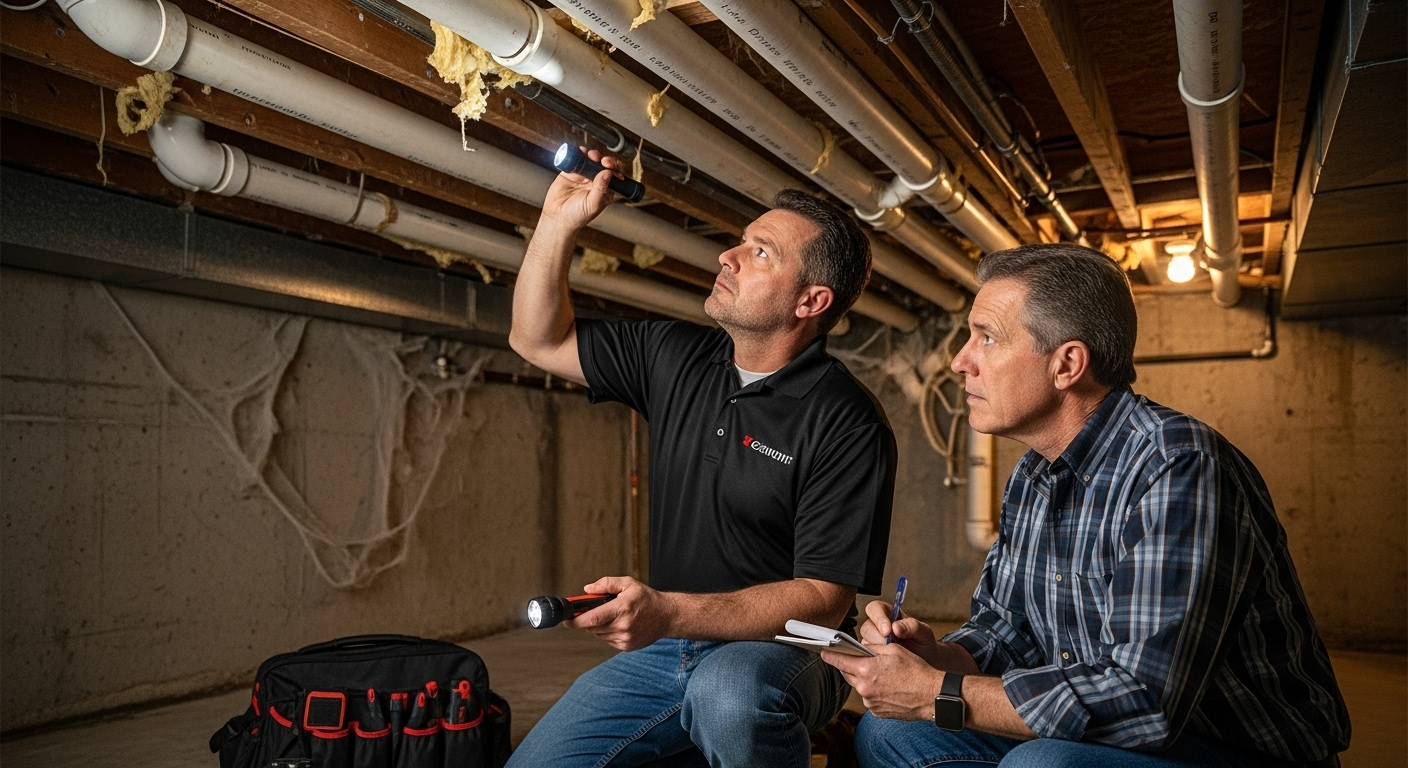
Stop Pipe Bursts Before They Start with DrainWorks Plumbing
Worried about the hidden dangers of pipe bursts? It is not just about sudden leaks. Your home’s plumbing can be put at risk by freezing temperatures, high water pressure, and ageing pipe materials. If you have spotted any unusual water pressure changes, discoloured water, or unexplained moisture as described in our “Understanding Why Pipes Burst: Causes and Consequences” article, these could be early signs of trouble that demand prompt attention.
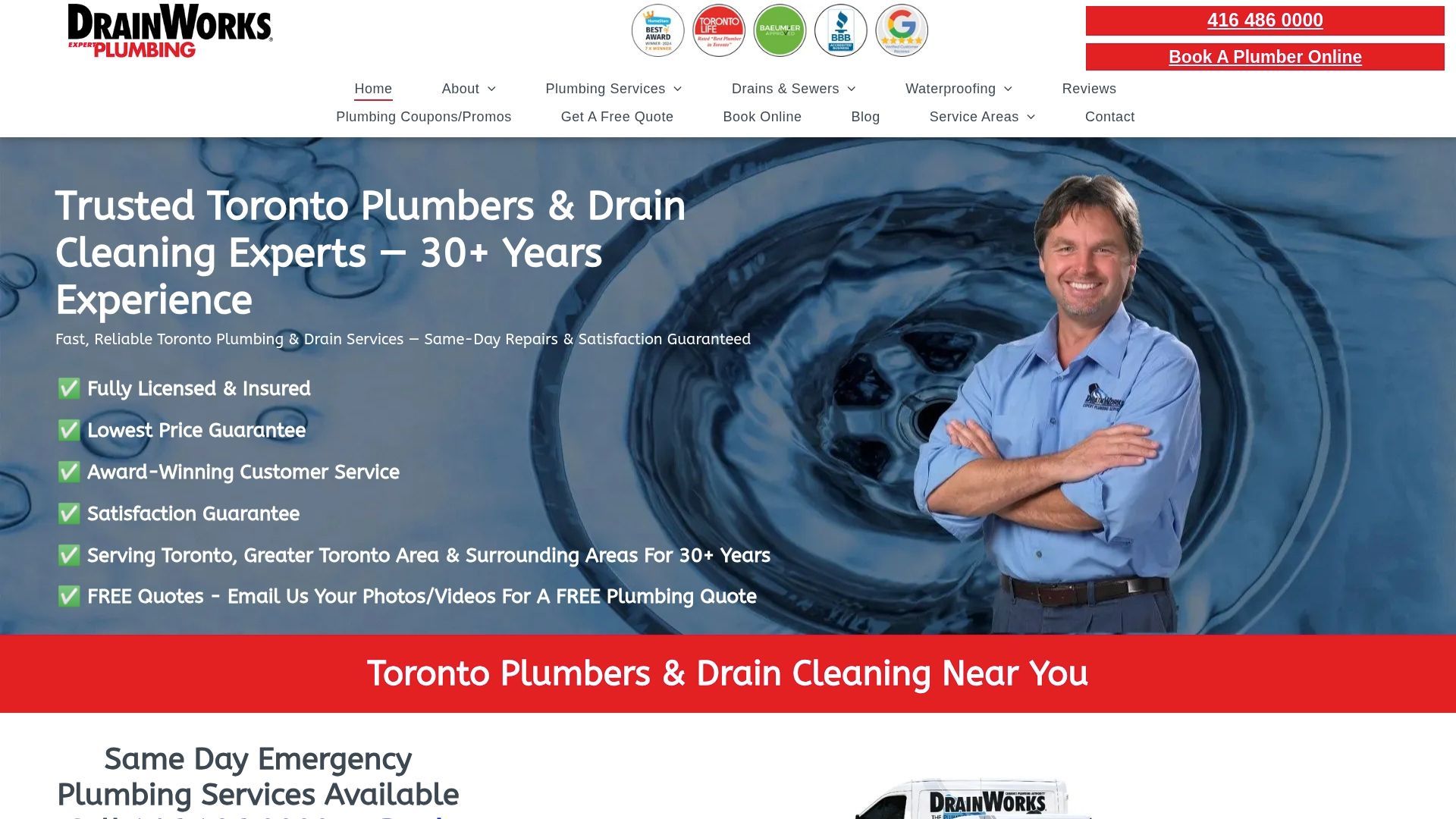
Protect your home from unexpected plumbing emergencies and water damage. With over 30 years of expertise serving Toronto homeowners, DrainWorks Plumbing is ready to assess your plumbing system and address root causes like corrosion, pressure surges, and worn-out materials. Explore more about our pipe assessment services in our solutions article or connect with our team for reliable, same-day help. Visit DrainWorks Plumbing now and secure expert support from the award-winning professionals you can trust.
Frequently Asked Questions
What are the common causes of pipe bursts?
Pipe bursts can be caused by temperature extremes, pressure changes, material degradation, corrosion, and external mechanical stress like construction activities or tree root intrusion.
How does temperature affect pipe integrity?
Temperature affects pipes through thermal expansion and contraction. When water freezes, it expands, increasing pressure within the pipe, which can lead to cracks or ruptures, especially in uninsulated pipes during cold weather.
How do different pipe materials influence the risk of bursts?
Different materials have unique properties: copper can become brittle over time, cast iron is prone to rust, and PVC is resistant to chemicals. Understanding these materials can help homeowners assess their risk of sudden failures.
How can homeowners prevent pipe bursts?
Homeowners can prevent pipe bursts by conducting regular inspections, insulating vulnerable pipes, managing water pressure, and addressing early warning signs such as unusual water pressure changes or moisture around pipes.



